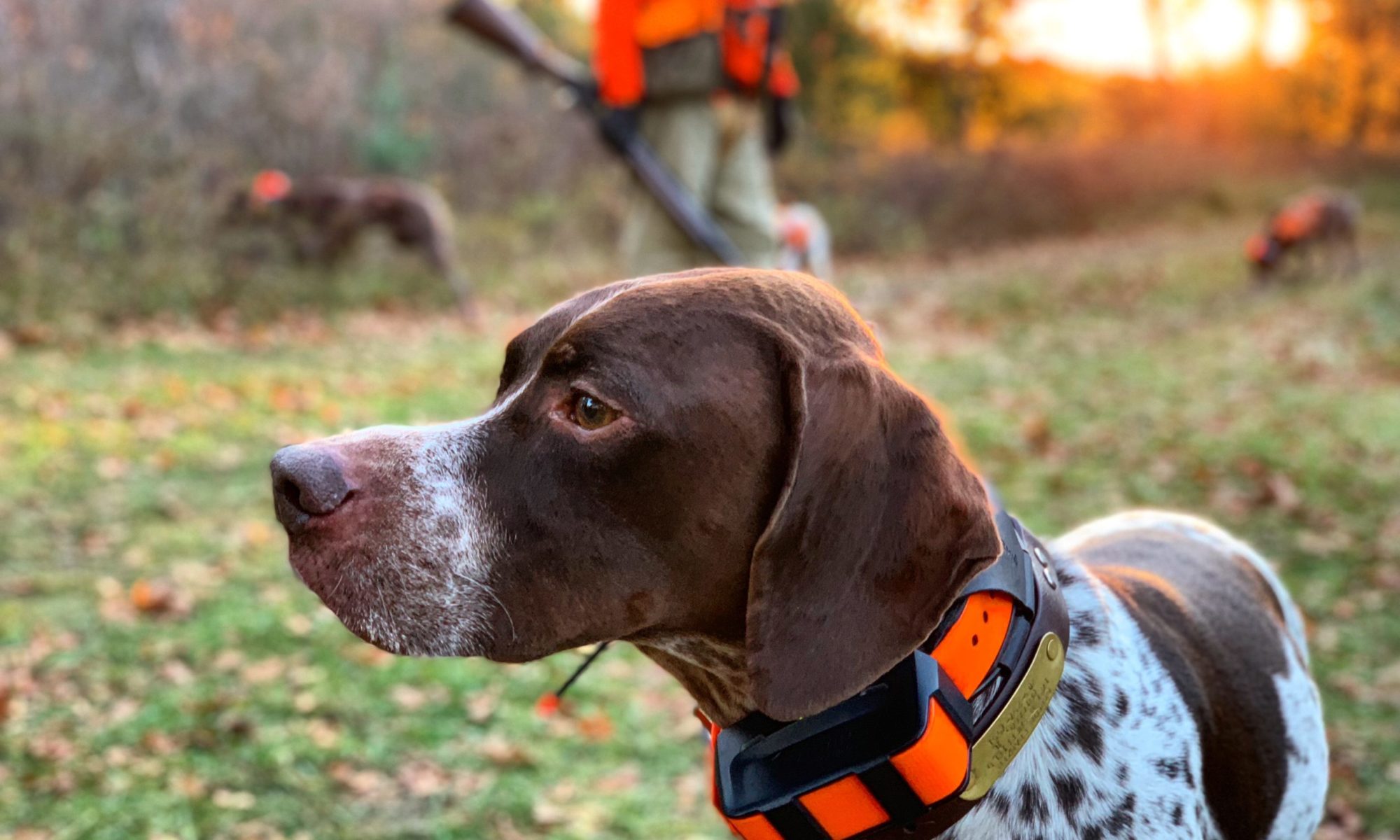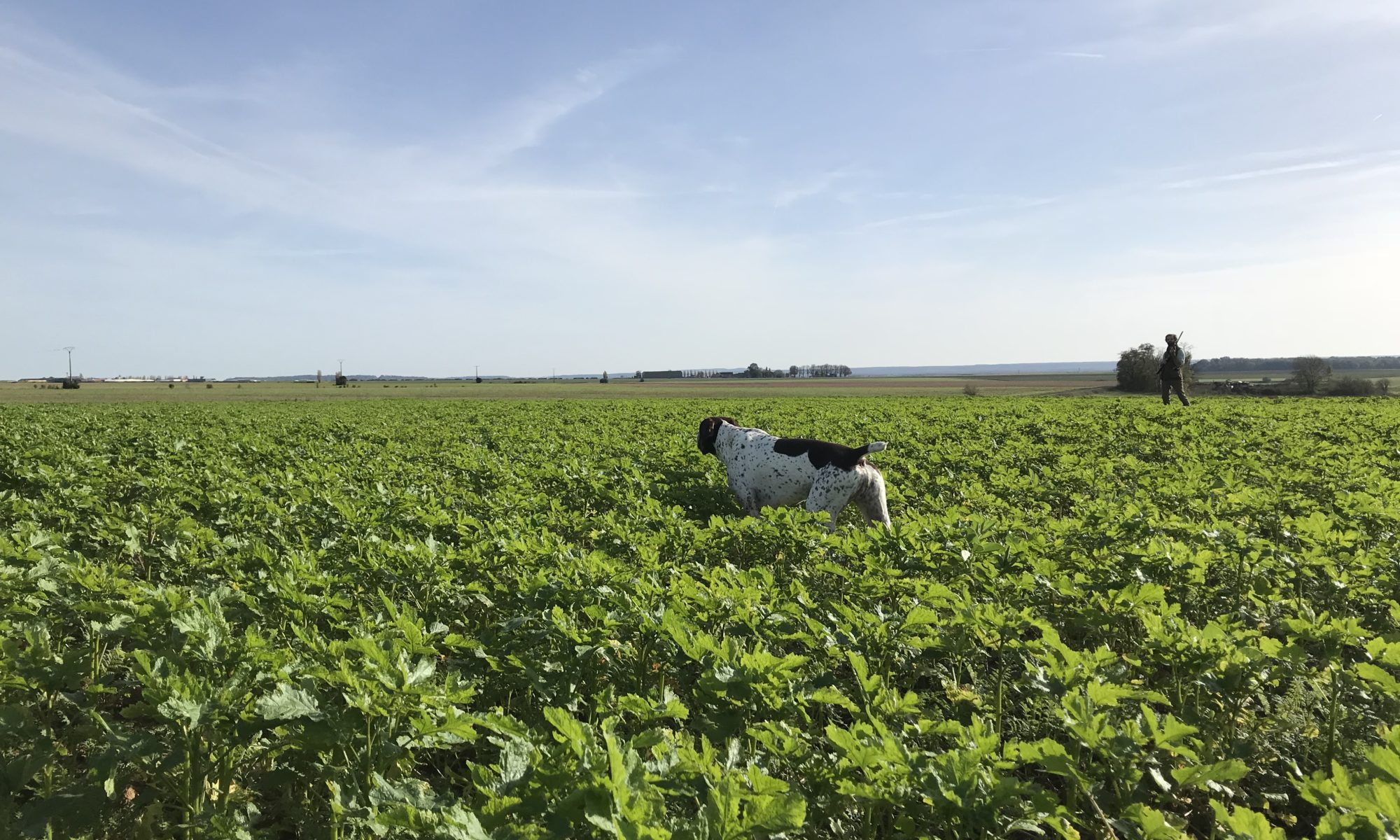About the Braque Français
The Braque Francais is comprised of the larger Braque Francais – Gascogne (BF-Grand Taille) and the smaller Braque Francais – Pyrenees (BF-Petite Taille).
The Gascogne is the original Braque Francais and was utilized in part to conform all of today’s short haired pointing breeds. It’s numbers in Europe are waning and there are only a few in North America. In the field, the Gascogne ranges out to approximately 100 yards/meters and moves at more of a trot. They have a solid point, track and retrieve well and take to water easily.
The Braque Francais-Pyrenees (BF-Petite Taille), is a smaller version of the Gascogne that was developed in the late 1700’s/early 1800’s. While calm and biddable in the home, the Pyrenees hunts with enthusiasm in the field. The Pyrenees has an above average nose, a staunch point, and like the larger Gascogne, it tracks and retrieves well and loves water. Having been developed in the rugged dessert Pyrenees Mountains on the France/Spain boarder, it handles heat very well. It also can handle colder weather. It’s range varies depending on the cover and concentration of game. In thicker cover and/or with good bird numbers, it will work closer, typically 50-100 yards/meters. In more sparse cover or with fewer birds, it will cast further, working at 150-200 yards/meters or more.
This breed is a wonderful, calm companion dog in the house that is tenacious in the field. They are easy to train and work with you in the field. They are an excellent choice for upland hunters whether they have a lot of experience in the field with dogs or very limited experience. Their love of water makes them versatile for hunters that enjoy upland and waterfowl hunting. Their short coat and smaller size would not make them a good choice for hardcore, cold weather waterfowlers.
Breed Standards
The CBFNA’s stated goal to keep the Braque Francais breed true in form, function, and temperament of it ancestors. No attempt to alter “improve” or Americanize this breed will be supported. This document is meant to add detail to the breed standard laid out by the FCI document from 1998. Please refer to the breed standard of both types. This document is meant to add clarity and detail some aspects may change as our understanding of the original breed deepens.
Braque Francais Pyrenean Type:
General Appearance:
An athletic rustic dog of medium proportions breed to find, point and retrieve small game. With a noble appearance, they not too heavy boned or muscled, but sufficient in both. The females are finer. The brown and white spotted hair should be short and fine, and skin should be tight.
Important note:
There should never be separate lines of this breed of field and show. Form and function need to always go hand and head. A dog appearing to match the breed description cannot win a major conformation award without passing a minimum field test to be set in agreement with the CBFNA and the organization holding the conformation or “show” event. No dog will be awarded a conformation title until the minimum age of 2 has been reached. No major conformation award will be awarded without a certificate certifying that dog has hips that are non-dysplastic and eyes free of genetic deficiencies.
Head:
Quite important but not too heavy. In profile, the lines of the skull and the muzzle are slightly divergent.
Important proportions The Length of the muzzle is somewhat shorter than the skull.
Skull: Generally oval in shape with rounded edges is preferred over a blocky look.
Stop: Fairly steep drop from the stop to the foreface.
Face: symmetrical, proportional.
Nose: Broad, well opened. Ideally should be one color of either brown or chestnut.
Lips: The lips are loose but not droopy.
Leathers: Set on or above the eye line, barely folded. The tips of the leathers must end at 2 cm nose leathers.
Ears: The ear set should slightly higher on the head is ideal. A single fold is preferred. The ends of the ears should be slightly rounded at the ends, neither pointy nor fully rounded. The tips ears must end 2 cm from the nose leather.
Eyes: Brown is preferred, and dark yellow is acceptable. Bright yellow would be a fault.
Neck: Should substantive and proportional (i.e. not wispy or elongated).
Body:
Back: Top line should be generally straight while slightly tapered from the withers down to the top of the hind quarters. While standing relaxed the back two ribs should be visible.
Males should be generally square if measured from the bottom of their feet to the top of their withers compared to the point of the shoulder to the point of their buttock. Females could be square or up to 2% longer than tall (tends to have larger litters).
While standing the front shoulder should at 90 degrees or straight up and down. The hind leg should be a little more than 90 degrees, or appear to be leaning forward slightly.
Chest: Should be moderately deep and broad.
Loin: Short, muscled, slightly arched.
Crop: Slightly oblique in relation to the top line.
Belly: A gradual rise is preferred, not a steep slope.
Flank: Ideally the flank should be noticeable (like a nice table cloth it dresses things up a bit.).
Limbs:
General appearance: Legs vertical, straight, and moderately muscled.
Forequarters: Strong but not heavy.
Shoulders: well-muscled and moderately sloping.
Elbows: At or slightly below the sternum.
Dew claws: Dew claws should be present at birth on the front legs. In the case of rear dew claws or double dew claws please inform that parent club of the situation.
Hindquarters:
General appearance: Fairly straight, and vertical.
Thighs: Fleshy, muscular.
Legs: well-muscled, but not heavy.
Hocks: Moderately angulated.
Tarsal and metatarsal: Rather short.
Feet: The feet should be tight, and rounded. The nails should be strong and the pads thick and fleshy.
Gait: Their gait should be quick and straight forward. At a slower pace they should seem to almost float over the ground effortlessly (if their chest is too broad their strides will loop outward some) which is not preferred) At a full sprint they should be surprising fast and smooth.
Tail: The tail set should be just slightly lower than the top line (to low and the dog will be slow and less agile and a tail set as high as the top line is not traditional). Since this dog is to be used in working heavy cover docking the tails short when the pup is 3-5 days old is the standard. Naturally occurring short tails are acceptable but not a trait that should be breed for.
Hair: Short, fine.
Color: Brown and white roan would be the most traditional. All brown would be acceptable but not preferred. Tricolored would be a fault. A small amount of “fire and ice” (different shades of brown on the same patch) is permitted, but not preferred.
Size:
Male: 47-58 cm.
Female: 47-56cm
The size of 50 to 55 cm is the one to aim for which covers the most numerous utilizations.
Weight: There is no set weight as there is with height, but generally these dogs weigh between 40-60 lbs.
Faults: Any departure from the foregoing points should be considered a fault and the seriousness with which the fault should be regarded should be in exact proportion to its degree and its effect upon the health and welfare of the dog.
Dog to heavy or hyperlight
Lips too droopy or too tight.
Round eyes, caused by the exaggeration of the zygomatic and suppercillary arches.
Ears set at eye level, too long (touching the nose)
Belly too tucked up (whippety)
Splayed feet.
Disqualifying faults:
Aggressive or overly shy.
Any dog clearly showing physical or behavioral abnormalities.
Split nose, pronounced depigmentation of the nose leather.
Entropion, ectropion, pink spots at the base of the eyelids.
No tail (anury).
Syndactyly (toes grown together), Wrong amount of toes.
For more information on the Braque Français, please read the following articles:
- “Braque Français” – Gun Dog Magazine (Chad Mason, 2010)
- “Today’s Braque” – Gun Dog Magazine (Jerry Thoms, 2018)
- Breed of the Week: The Braque Français Part One and Part Two (Craig Koshyk, 2012)

